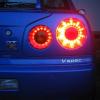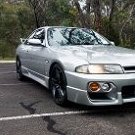Spun Out My R33, A huge leason learnt.
Announcements
-
Similar Content
-
Latest Posts
-
You've definitely taken out the "most images in a single post" record! This looks awesome, I'm loving it. Its funny how the OEM movement has come back around again, I love the OEM GTR wheels on this car with that colour!
-
Ha ha, I was over here researching if there's any KLine diagnostics out there, and the next step was going to be looking for the pinouts to work out what/how it's controlled.
-
@Yeetus Happy with the loop? Trying to decide loop or pile.
-
If someone smarter than me read a diagram as to how it operates that seems feasible. Combined with a pressure bleeder to push fluid *through* it while it's open, I mean.
-
By Dose Pipe Sutututu · Posted
Apologies, wrong use of terminology. Yes, trigger the ABS unit / solenoids to allow the air pockets to advance. The Nissan unit, found in the R32~R34 and S14/15 seem very basic compared to other vehicles.
-










Recommended Posts
Create an account or sign in to comment
You need to be a member in order to leave a comment
Create an account
Sign up for a new account in our community. It's easy!
Register a new accountSign in
Already have an account? Sign in here.
Sign In Now